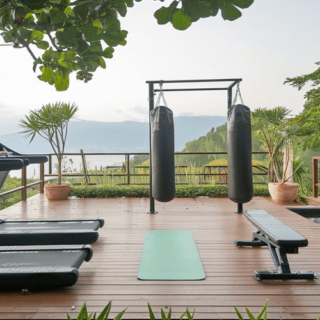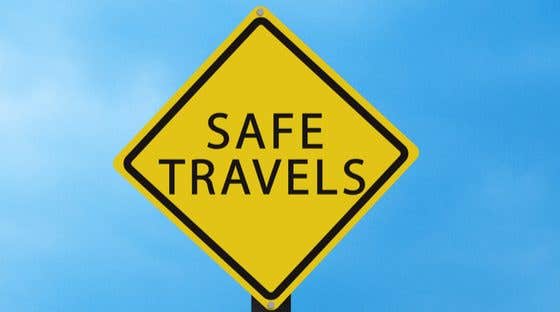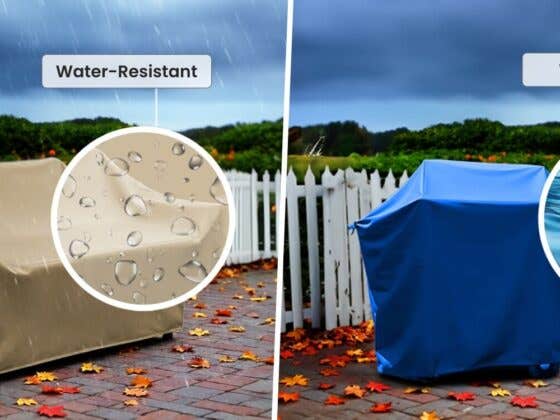The car is packed, the chair covers have been placed, the solar shades have been drawn, and your tank is full: let the summer road trip begin! Road trips are an American tradition enjoyed by thousands of families every summer. Staying safe among your fellow road trippers is simple with precautionary measures and quick thinking.
Simple Service

From tire rotations to oil changes, there’s plenty of services you should have performed on your car before taking it on the road. Your vehicle is far less likely to have any issues on the trip if you’ve taken care of maintenance ahead of time.
Have your mechanic perform the following:
- Oil change
- Wiper fluid replacement
- Check coolant levels
- Check battery
- Inspect belts and hoses
Stock up
Your suitcase is packed with swimsuits, sunscreen, and everything else you need for a well-planned summer trip, but what about your car? Ensuring that you have all the necessary safety supplies is a crucial step in road trip success.
An emergency supply kit is essential for road trip safety. Items such as first aid kits, blankets, a flashlight, maps, a vinyl tarp, a couple gallons of water, and jumper cables will keep you and your family safe in the unlikely event of a road trip emergency.
Plan Perfect

Prior to your summer trip, take the time to plan out every step of your journey on the road. This includes deciding on a route, estimated departure and arrival times, and choosing when and where to stop for gas, food, and fun.
Making plans ahead of time ensures that you won’t have to make stops in unsafe areas, and eliminates any anxieties you may have about fuel availability. Have your travel agenda in writing or saved on your phone for quick reference, and be sure to share them with friends and family back home so they know your route.
Car Seat Safety

If you have kids joining the road trip adventure, you need to make their safety a top priority. Improper car seat usage poses the biggest safety risk to children, and can cause serious injury in the event of a wreck.
First and foremost, make sure each child is using a car seat that is appropriate for their age. Infants should be in rear-facing seats and older children in forward facing seats, with their weight determining the appropriate model of car seat.
And remember: no child under the age of 13 should ride in the front passenger set of the car under any circumstances.
Take Breaks
No matter how excited you are to reach your destination, taking frequent breaks while driving long distances is necessary. After all, no one wants to risk falling asleep at the wheel. Breaks give you a chance to rest, refresh, and prepare for the next leg of your journey.
Consider using breaks as a chance to swap drivers. Breaking up the monotony of a long drive helps keep everyone alert and quick to respond to any dangers on the road.
Defensive Driving

No matter where your destination lies, the reality is that you’ll be sharing the road with countless other drivers on every step of your journey. The key to staying safe around other motorists is driving defensively.
Defensive driving entails avoiding hazards on the road using quick thinking and constant awareness of one’s surroundings. If you have multiple road trips on your summer schedule, consider enrolling in a defensive driving course to hone your skills in preparation.
Spare a Tire?
As much as we may try, no one can predict when and how a flat tire will occur. Flat tires can strike on even the shortest of trips, so having a proper spare available is crucial.
Keeping a spare tire in the trunk is only one step of the equation: you need to have the proper tools and know-how to change a tire. There are a number of YouTube tutorials available that can show you the ins and outs of tire changing if you’ve never learned.
The Danger of Distractions

A distracted driver is a dangerous one, not just to themselves but their passengers and everyone else on the road. Eliminating distractions within your vehicle allows the driver to better concentrate and keep everyone safe.
Loud music, phone usage, and rowdy kids in the backseat are the most common distractions on the road. Set up some rules among your passengers to cut down on distracting behaviors for safety’s sake.
Reservation Ready
Any road trip longer than about 8 hours should factor in a night of rest for every day spent on the road. You and your family may be eager to reach your destination, but taking the time to stop for the night will provide the rest you need for a safe driving experience.
Make your reservations at reputable hotels or vacation rentals ahead of time to ensure you won’t have to stress about searching for a place to rest your head while on the road. If you’re keen on saving money, consider camping with the help of a vinyl tarp as an alternative.
Map It

GPS devices and mobile maps are a staple of our modern, plugged in lives. Take advantage of this innovative tech by utilizing GPS services throughout your trip to keep you on top of route changes or traffic jams.
Of course, having physical maps on hand is never a bad idea. If you happen to run out of cell service in an isolated area, a paper map of the region can save you from the sticky situation of getting lost on a road trip.
Weather or Not
Weather conditions have a huge impact on road safety. From flash flooding to high winds, there’s a number of meteorological events that can turn a day’s worth of driving on its head.
Check the forecast before heading out each morning. Be prepared to change plans if there’s upcoming inclement weather, and always pull off the highway or into a parking lot in the case of a surprise storm.
As your custom covers such as chair covers protect your outdoor furniture in the bad weather, getting off the road will keep you safe from the dangers of a storm.

















Recent Comments